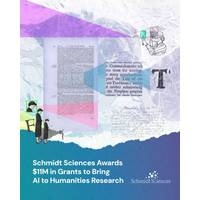
Schmidt Sciences Awards $11m for AI in Humanities Research
Schmidt Sciences has awarded $11 million for up to 23 teams of researchers around the world to develop and apply artificial intelligence to archaeology, history, literature and other humanities disciplines, seeking to unlock new understandings of human history and culture.“Our newest technologies may shed light on our oldest truths, on all that makes us human—from the origins of civilization to the peaks of philosophical thought to contemporary art and film,” said Wendy Schmidt, co-founder of Schmidt Sciences. “Schmidt Sciences’ Humanities andAI Virtual Institute (HAVI)

StrateSea Technology Selected for NATO DIANA 2026 Challenge Program
StrateSea Technology, a developer of operator first AI systems for maritime missions, announced that it has been selected by NATO’s Defense Innovation Accelerator for the North Atlantic (DIANA) to join the 2026 Challenge Program. StrateSea is among 150 companies selected from more than 3,600 applicants across 24 NATO nations to advance dual-use technologies addressing key defense and security priorities.StrateSea was selected for its flagship platform, FeatureLab, a no-code, sensor-agnosticAI system that accelerates detection, classification, and decision-making from multimodal maritime data.

SYRENE: An Underwater Embedded Artificial Intelligence Camera for Invasive Fauna Monitoring
webs. This amplifies the vulnerability of ecosystems to global changes.The SYRENE project and the need for an invasive fauna active monitoringStarted in 2020, the SYRENE project (SYstème in situ de REconnaissance en temps réel de faune invasive sous-mariNE) aims to use embedded artificial intelligence to help local authorities detect and quantify invasive underwater species that threaten the balance of local marine ecosystems. Artificial intelligence makes it possible to detect complex shapes that were impossible to distinguish with any degree of accuracy just a few years ago.Some invasive
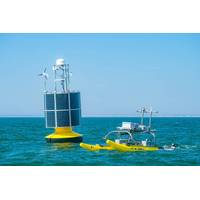
OPT, Mythos AI Partner Up for Autonomous Maritime Systems Boost
Ocean Power Technologies (OPT) has partnered with Mythos AI to integrate advanced artificial intelligence autonomy software across OPT’s WAM-V autonomous surface vehicles and PowerBuoy platforms.The partnership aims to enhance OPT’s operational performance and expand its range of integrated maritime solutions for customers in the defense, security, and commercial sectors, strengthening its position in the autonomous and intelligent systems market.Under the agreement, OPT and Mythos AI will integrate Mythos’s autonomy stack into OPT’s existing WAM-V fleet, with initial demonstrati
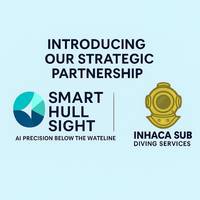
Inhaca Sub Launches AI-Driven Underwater Hull Inspection System
Inhaca Sub Diving Services – Mozambique has announced the launch of Smart Hull Sight (SHS), a new AI-powered platform that digitalizes underwater hull inspections through 3D photogrammetry, corrosion detection, and CII performance analytics.Developed by Inhaca Sub’s diving and ROV specialists, SHS enables shipowners, class societies, and port operators to assess hull condition with unprecedented precision.The system automatically detects corrosion, estimates anode life, and generates digital-twin visualizations for remote review via its Inspection Theater module.Key features:AI corrosion
![Aerial view of the Rock Islands and coral seascape at the Republic of Palau. [Photo credit: The Nature Conservancy]](https://images.marinetechnologynews.com/images/maritime/w200h200padcanvas/aerial-view-rock-165050.jpg)
Bezos Funds AI Nature Projects
The Bezos Earth Fund has announced $30 million in new investments aimed at scaling AI to tackle biodiversity loss, climate change, and food insecurity.Each of 15 teams will receive up to $2 million as part of Phase II of the AI for Climate and Nature Grand Challenge.“AI can be a powerful ally to help make the world a better place,” said Lauren Sánchez Bezos, Vice Chair of the Bezos Earth Fund. “These innovators, using AI, are showing us new possibilities by reimagining how we grow food, protect wildlife, and power our planet to make a true impact.”The winning projects

Toqua, Weathernews Join Forces for AI-Driven Vessel Voyage Optimization
Weathernews, a Japan-headquartered weather intelligence firm, and Belgium’s Toqua, a developer of physics-informed AI for ship performance modeling, have entered a strategic partnership to integrate vessel-specific performance models into Weathernews’ voyage optimization systems.The collaboration aims to improve fuel efficiency and operational predictability by combining Toqua’s AI-trained vessel performance models with Weathernews’ weather routing and optimization algorithms, enabling more accurate voyage planning based on how individual ships perform under varying operational
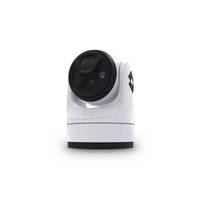
FLIR Launches AI-Powered Multi-Spectral Maritime Camera Systems
FLIR, a leader in high-performance marine thermal-imaging systems, announced the debut of its new flagship series of multi-spectral maritime camera systems, the M460 and M560.The M460 and M560 are elite AI-powered multi-spectral camera systems tailored specifically for professional marine applications ranging from first responders, commercial vessels, and superyachts. Taking the next step from a conventional thermal camera, the M460 and M560 are complete marine-imaging systems that combine a high-performance thermal sensor with a 4K, low-light visible camera, a 12KM ITAR-free laser rangefinder and
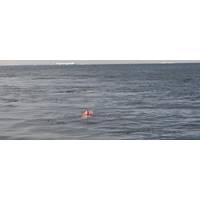
AI is Boosting Operational Autonomy
Technology researchers recently published a study in Frontiers on a deep learning robotic-vision method that could help prevent unmanned underwater vehicles from disturbing nearby fish while operating in the confines of fish farms.A newly-published study published in Engineering Applications of Artificial Intelligence by UK researchers explores the advances being made in subsea robotics and challenges involved in achieving full operational autonomy. “Current systems predominantly exhibit partial autonomy, performing pre-defined missions with limited adaptability. However, advancements in hybrid

 August 2025
August 2025





